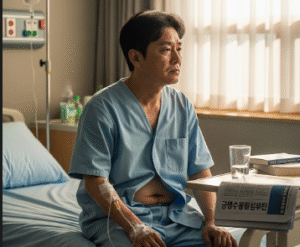What it is
➝ The pulsed-dye laser (PDL) emits light at 585–595 nm, which is strongly absorbed by oxyhemoglobin, making it highly effective for treating vascular lesions.
➝ It delivers pulses of energy that cause selective photothermolysis, coagulating blood vessels while sparing surrounding tissue.
➝ It is widely used for facial telangiectasia, rosacea, diffuse erythema, port-wine stains, angiomas, and post-procedural vascular redness.
➝ In Korea, PDL is a cornerstone of vascular laser dermatology, often combined with other devices like KTP or Nd:YAG lasers for multi-depth vascular management.
Why it’s done
→ To treat facial redness, telangiectasia, and broken capillaries more effectively than creams or systemic therapies.
→ To manage rosacea-related erythema, improving both medical and cosmetic outcomes.
→ To treat congenital vascular lesions such as port-wine stains and hemangiomas.
→ To correct post-laser or post-surgical erythema, often seen in cosmetic procedures.
→ In Korea, PDL is also incorporated into skin rejuvenation programs to create an even skin tone.
Alternatives
→ KTP 532 nm laser: more effective for fine, superficial vessels.
→ Nd:YAG 1064 nm laser: better for deeper or larger-caliber vessels.
→ Intense pulsed light (IPL): broader spectrum, useful for diffuse redness but less selective.
→ Sclerotherapy: effective for leg veins, not typically used on the face.
Preparation
→ Avoid tanning and photosensitizing agents before treatment.
→ Stop retinoids or exfoliants 3–5 days prior.
→ Cleanse face before procedure; anesthetic cream usually not required but can be used for sensitive patients.
→ In Korea, vascular mapping with digital dermoscopy is often performed for baseline evaluation.
How it’s Done
→ A PDL handpiece is applied to target vessels, delivering short pulses (0.45–40 ms).
→ Spot sizes: 7–10 mm commonly used for facial vessels.
→ Pulse energy and duration are adjusted depending on vessel size and depth.
→ Integrated cooling (cryogen spray or contact cooling) protects the epidermis and reduces pain.
→ Typical treatment time: 20–30 minutes for full face.
→ Most patients require 2–4 sessions spaced 4–6 weeks apart.
Recovery
→ Temporary redness and swelling for 1–3 days.
→ Purpura (bruising) is common with PDL, especially at shorter pulse durations, lasting 5–10 days.
→ Treated vessels darken and fade gradually over 1–2 weeks.
→ Patients usually resume normal activities immediately, though strict sun protection is advised.
Complications
→ Purpura is expected in some protocols but may be cosmetically bothersome.
→ Post-inflammatory hyperpigmentation in darker skin types.
→ Blistering, scabbing, or scarring if excessive fluence is used.
→ Recurrence of vessels with ongoing rosacea, sun exposure, or vascular fragility.
Treatment Options in Korea
→ Korean dermatology centers are highly experienced in PDL for rosacea, telangiectasia, and congenital vascular lesions.
→ Many clinics use 595 nm PDL with dynamic cooling devices (DCD) to minimize purpura and downtime.
→ PDL is often combined with KTP (for superficial vessels) or Nd:YAG (for deeper vessels) in advanced vascular programs.
→ Cosmetic dermatology clinics frequently integrate PDL into facial rejuvenation packages, pairing it with pigment lasers (Q-switched Nd:YAG, picosecond lasers) for even tone.
→ Pediatric hospitals in Korea use PDL for port-wine stains and pediatric hemangiomas, achieving excellent long-term outcomes.
→ Korean dermatologists emphasize aftercare: sun protection, anti-inflammatory creams, and sometimes oral medications (doxycycline for rosacea-related flares).
→ With Korea’s advanced vascular laser technology and cosmetic focus, PDL offers safe, effective, and cosmetically refined treatment for facial vascular concerns.













